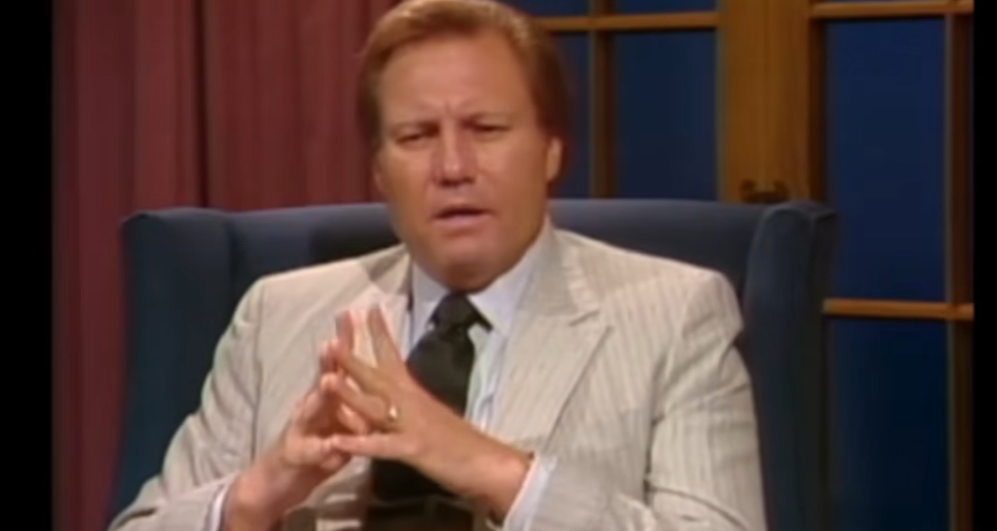An intense period of waiting, prayer, and introspection began on June 15, 2025, when Jimmy Swaggart was taken to the intensive care unit (ICU) of a Baton Rouge hospital after suffering a heart attack. For more than 60 years, the 90-year-old televangelist had been a consistent presence in American religious life. The public’s immediate reaction to his health crisis, which his son Donnie Swaggart described as critical, was heartfelt, pious, and remarkably similar to how many grieve for national leaders.
“Without divine intervention, we are preparing for the Lord’s will,” Donnie told the public in a particularly heartfelt and clear statement by the evening of June 16. His words, which were incredibly powerful in their sincerity, started a digital prayer chain that quickly spread throughout churches, radio stations, and social media platforms across the country. Donnie’s appeal sounded like a son watching a father’s flame flicker on the brink of eternity rather than being theatrical.

| Detail | Information |
|---|---|
| Full Name | Jimmy Lee Swaggart |
| Date of Birth | March 15, 1935 |
| Date of Death | July 1, 2025 |
| Age at Death | 90 |
| Nationality | American |
| Profession | Televangelist, Gospel Singer, Author |
| Known For | Founder of Jimmy Swaggart Ministries, SonLife Broadcasting Network |
| Cause of Death | Heart attack followed by extended ICU stay |
| Family | Donnie Swaggart (son), related to Jerry Lee Lewis and Mickey Gilley |
| Reference | https://www.nytimes.com/2025/07/01/the-rev-jimmy-swaggart-obituary.html |
Jimmy Swaggart had continued to appear on SonLife Broadcasting in recent years, albeit with a noticeable slowdown and physical limitations. His sermons, which were frequently interspersed with his trademark gospel piano and sentimental hymns, maintained their emotional impact despite his deteriorating mobility. Behind the scenes, however, his loved ones observed that his vitality had significantly diminished and that frequent medical attention was now required.
He was discovered unconscious at home after suffering a cardiac arrest early in the morning. His heartbeat was stabilized enough for ICU admission by first responders using chest compressions. Updates in the days that followed were consistently the same: “No change.” Ministry spokesperson Megan Kelly was in constant contact, thanking the public for their prayers and reiterating how serious his condition was.
The religious community stayed in a holding pattern for more than two weeks, getting together every night, sometimes in person and other times virtually, to support the man who had famously sobbed, “I have sinned,” on national television. One of the most watched religious confessions in history was made in 1988 after being embroiled in a sex scandal. Nevertheless, Jimmy quietly and independently rebuilt in spite of the embarrassment, never straying from his main purpose or message.
Those who identified with his shortcomings found his redemption story to be especially motivating. Swaggart leaned more deeply into faith than other fallen televangelists, who lost their influence. Despite being smaller than before, his ministry became more genuine. An outgrowth of his own story, the Family Worship Center in Baton Rouge continued to serve as a center for worship, healing, and resiliency.
His passing marks the end of an era in American faith media. From late-night broadcasts to live-streamed Instagram devotionals, televangelism has changed dramatically. American Christianity’s new voices are frequently polished, brand-aware, and fluent in digital media. Raw, expressive, musically talented, and emotionally open, Swaggart was something else entirely. His sermons weren’t TED Talks; they were spiritual storms.
Swaggart continued to broadcast from his pulpit throughout the pandemic, when many preachers switched to virtual formats, giving older viewers a reassuring sense of consistency. His later ministry was characterized by that unyielding perseverance, which was especially resilient in a time of swift change. Even when his body wasn’t, viewers could rely on him to show up at 10 a.m. on Sunday with his suit pressed, Bible open, and voice unflinching.
His congregation and media team continued to provide him with behind-the-scenes support when his health started to deteriorate more noticeably in early 2025. Swaggart made sure his sermons would continue to reverberate long after his voice had become weak by working with his son Donnie and reliable team members to maintain programming continuity. His presence was maintained even when he was not there thanks to extremely effective archive management.
The headquarters of his ministry became a place of silent pilgrimage in the final days before his death. People gathered outside the building to pray, hailing from both nearby parishes and far-off states. A few placed flowers. Others performed hymns. For them, Swaggart was more than just a preacher; he was the voice they heard growing up and the one who brought hope into their living rooms during trying times.
The ministry confirmed his death on July 1, 2025. “He is now with the Lord” was a succinct, emotionally charged, and spiritually reassuring statement. It signaled the end of an era that was based on perseverance as much as evangelism. Swaggart persevered admirably through scandal to salvation, collapse to comeback, particularly in a media landscape that frequently discards the fallen.
Through the use of his own vulnerability, Swaggart provided an emotional road map for dealing with failure. He reminded people that it is possible to lose your footing, slowly regain it, and then walk again with conviction, dignity, and humility. For a generation that is increasingly under pressure to project flawless, polished lives online, that narrative is especially helpful.
Jimmy Swaggart’s health battle was about more than just mortality; it was about legacy for those who knew his voice before they knew Scripture. His story—flawed, faithful, and completely human—will continue to inspire, and his sermons and hymns will continue to be broadcast and streamed.


